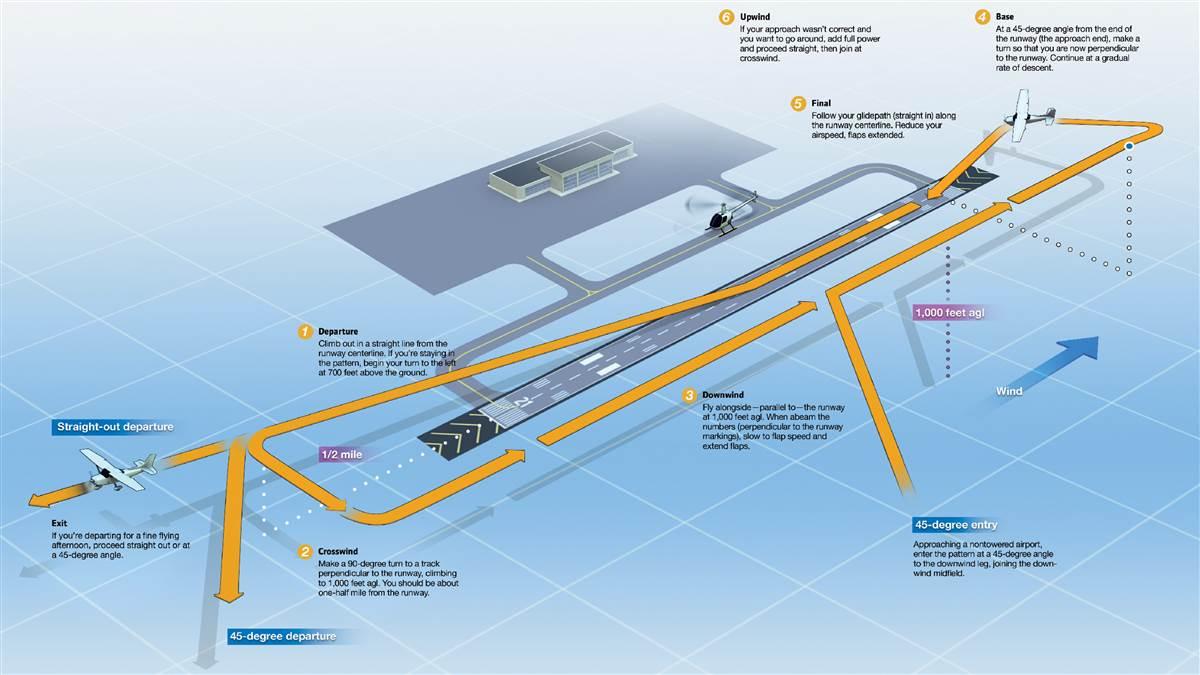Many people joke and say they never use algebra after the grueling lessons of high school, and while that might be true, in flying it’s geometry that you’re going to want to remember. Words such as “perpendicular,” “rectangular,” and “parallel” all apply here. So, what is “the pattern”? It’s the path you will fly when leaving and returning to the airport, specifically the runway. For a typical trainer such as a Cessna 172, a “standard” traffic pattern is flown to the left and at 1,000 feet above ground level (agl). Most patterns are flown in a rectangle. Six segments are in a typical traffic pattern: departure, crosswind, downwind, base, final, and upwind.
Nonstandard operations
Although standard patterns are flown at 1,000 feet agl and with left turns, nonstandard patterns may be required because of terrain, traffic, or for noise abatement. Check the chart supplement for information such as pattern direction and altitudes. On VFR sectionals, RP followed by a runway number indicates a right pattern. RP* means you should check the chart supplement for special conditions, such as a nonstandard pattern for gliders or ultralights.
Helicopters on the field
At airports where there are helicopter operations, it may seem chaotic to have both fixed-wing aircraft and helicopters in the pattern. But helicopter pilots generally fly right-hand patterns—the pilot usually sits on the right in a helicopter, fixed-wing often on left, so visibility is best for each at right (helicopter) and left (fixed wing). Helicopters are also mandated to avoid the flow of fixed-wing traffic; they fly a closer pattern, and at a lower altitude (usually 500 feet agl).




